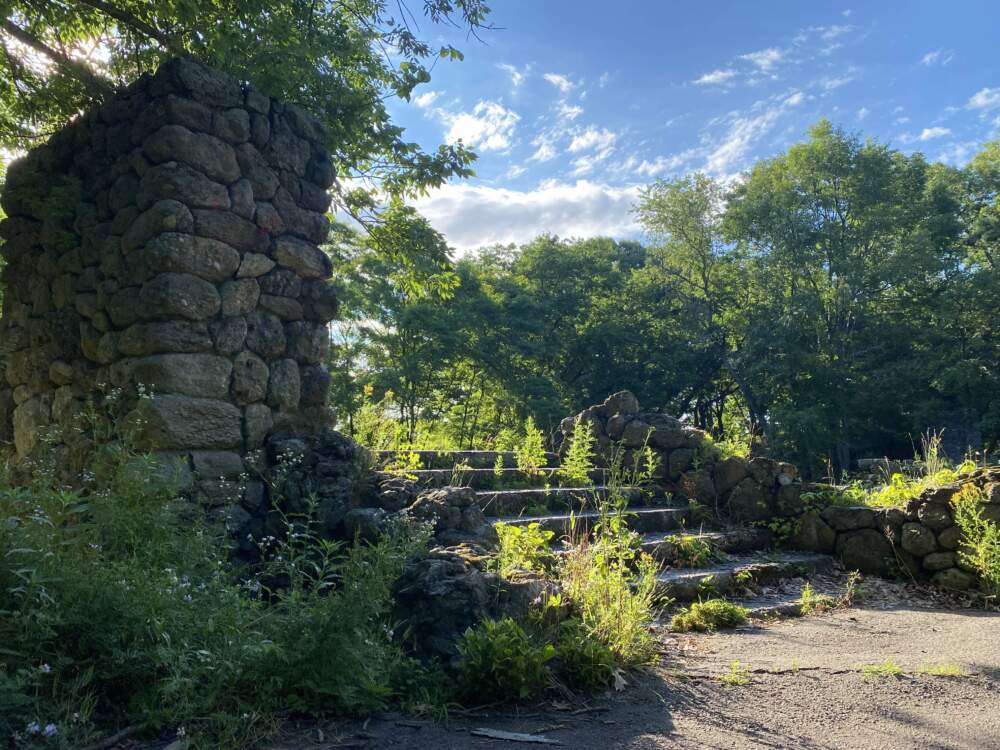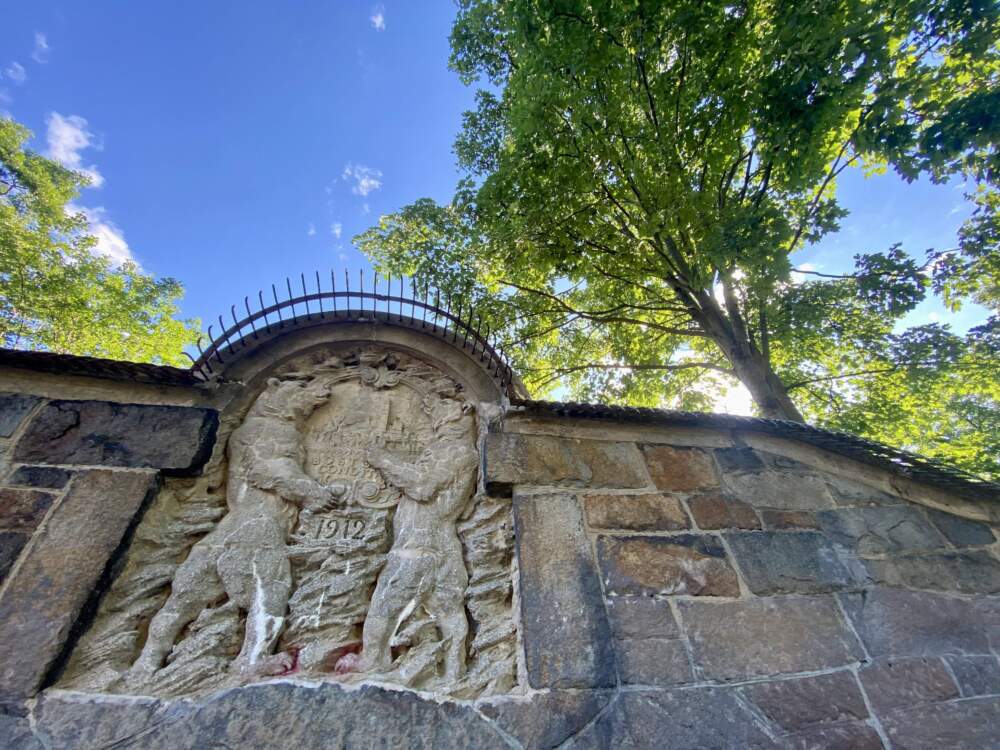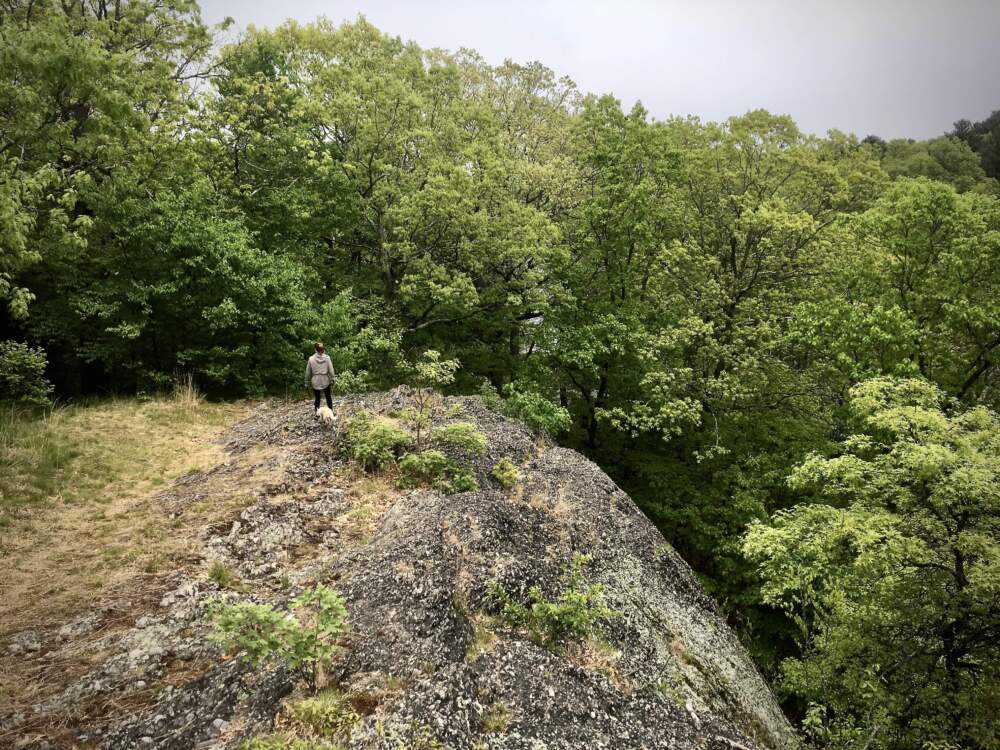Advertisement
Field Guide to Boston
Franklin Park is a lovely place to get lost

Heat radiates from the asphalt and hits my shins during my after-work walk. My dog, Beasley, lifts his paws quickly as he walks so they don’t burn. Condos being built five blocks away create huge booms as 100-year-old-buildings fall into piles of bricks. Cars and dirt bikes and delivery trucks rumble by us, and I pull Beasley away from broken glass sparkling on the sidewalk in time to almost step on a Dunkin’ cup so newly launched our way that it is still wobbling to the curb. We are one and a half blocks from home, but for the people driving by, my neighborhood is not a place, but an in-between.
I live here, I want to shout at them.
We walk along a chain-link fence that has fished a faded Doritos bag, a Styrofoam cup and a few tattered lottery tickets from the air until we find an opening. And when we slip into Franklin Park, a transition occurs. It’s not a dissolve or a fade, it’s a quick cut. The bright light and the noise are replaced by a quiet, cool tunnel of green. There is no more sky, only a canopy of spring, emerald and forest greens. There is no more road — only narrow paths winding past fallen trees and between boulders, set to a soundtrack of chirping birds. In the middle of Boston, we are in the wilderness. We’ve gone through the wardrobe to Narnia.
This park, the largest open space in the city, was designed by Frederick Law Olmsted and opened in 1885 — certainly a lesser-known work than the landscape architect’s Central Park or the U.S. Capitol grounds. Sixty-five acres of the park is dedicated to wilderness. And while there is some proof humans have been here, it is concealed. If you stand still for a minute and slow your gaze, you’ll start to see winding stone paths under waist-high weeds, a cracked fountain under a bush, a mossy wall supporting a fallen tree.

After we walk up tilted granite steps to chase a chipmunk into the empty space under a stair, we’re at the place Google Maps calls Elma Lewis Playhouse in the Park. When I first moved to this neighborhood, I did circles looking for something resembling a playhouse, but didn’t see it. After a fire in the 1940s destroyed one of Olmstead’s buildings, Elma Lewis turned the open-air ruins into a concert venue. Right here, in a rectangle of crumbling puddingstone with two staircases that lead into a moat of knotweed, Duke Ellington played Fourth of July concerts. Now, Elma Lewis’ Playhouse in the Park lives on around the corner, where Jazz and R&B waft from a temporary stage each summer. All these years later, the dancing continues.
I walk through this park every day. In the spring, I jog in awe of the pink flowers that erupt suddenly from sticks. In the summer, the leaves return to envelop me in shades of green. In the fall, orange and yellow light the trees on fire as I slip through narrow trails around boulders. And in the winter, I get up at sunrise to make the first tracks in mounds of white so high that snowflakes fall into my tallest boots. The forest here is so thick that the first year I repeatedly got lost less than a mile from my house. But sometimes I prefer that over knowing exactly where I am.
Be careful in there, my mother-in-law told me when she visited.
And I said I would, though I’m not sure there is much to be cautious about. There are no more bears in Boston, and the worst the turkeys ever do is show you their mating dance — feet tapping to an unknown tune, feathers splayed out into a fan, wings purring and drumming. I didn’t tell her that in the movie “Mystic River,” Kevin Bacon’s character finds the body of Sean Penn’s fictional daughter here, at the bottom of what was once a pool in the bear dens at the Franklin Park Zoo.
Advertisement

These old bear enclosures are no longer a part of the active zoo, and so, Beasley and I get to walk through rusted-out bars covered in vines to the parts of a zoo we’ve never been allowed in. We jump in and out of an empty water feature, peek in the door where animals would have waited to be fed carrots and watermelon, glance up at long spikes hanging around the perimeter walls like stalagmites. Above us two stone bears hold a city of Boston crest dated 1912. In front of us someone has used red spray paint to write black boy can’t fly with all this hate around on a concrete divider, between three painted birds in flight.
One time I ran up what must once have been a grand staircase to the bear dens and my stomach dropped when I saw someone in the empty pool. But she was very much alive, sitting on a beach chair, feet propped up on the edge, listening to a boom box, drinking something pink.
I’m not usually scared of forests; it’s the world on the other side of the chain-link fence I’m concerned about. So much of my life outside of this park requires a clear outcome: navigate from point A to point B, complete X project using Y guidelines, get C done by D date. But when your only goal is to eventually end up where you started, exploration becomes the point.

Franklin Park is slated for upgrades that will restore some of the ruins, increase accessibility and make renovations to a crumbling school stadium — all goals I support. Olmsted believed that parks were a place for people to come together — not just wander alone in ruins. And while Franklin Park is already home to a number of community spaces — the many playgrounds, the sports fields, the picnic grove that hosts everything from bird watching to rallies and vigils — I also love that this park gives me the ability to get lost; to exist in the city away from the threat of cars; to discover something new around each boulder. I also love the ruins.
When Beasley and I emerge from the park, the sun has recast from a sharp spotlight to a candlelit orb. As we trot past the colorful triple-deckers on the way back home, orange sky turns to pink, to purple, to dusk. And when it gets dark, we sit on our back patio where — because of the 500 acres of Franklin Park behind us — we can also see the stars.
